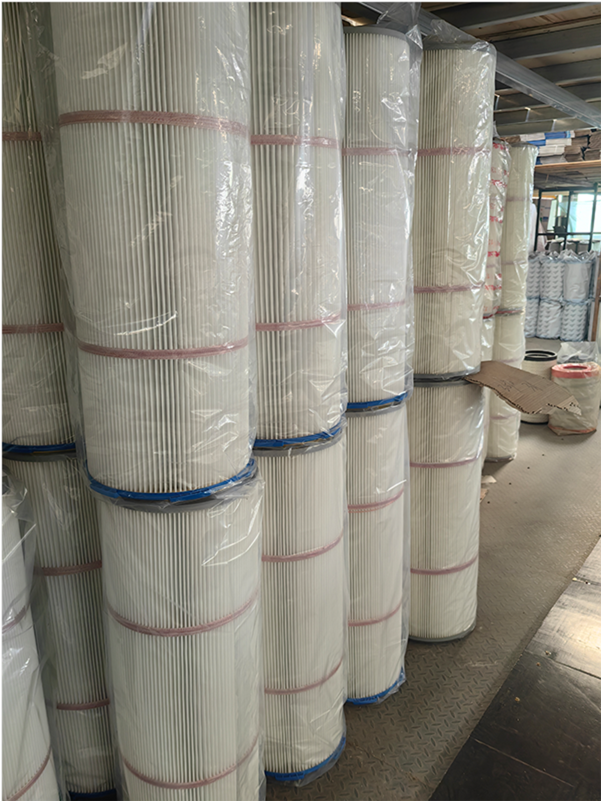 Tel:
+8615930870079
Tel:
+8615930870079
Dec . 21, 2024 13:29 Back to list
pleated dust collection cartridges
The Importance of Pleated Dust Collection Cartridges in Industrial Air Quality Management
In today's manufacturing and industrial environments, maintaining air quality is a paramount concern. The prevalence of airborne pollutants, including dust and particulate matter, poses not only health risks to employees but also impacts operational efficiency. One effective solution to this problem is the use of pleated dust collection cartridges. These innovative filters play a critical role in dust collection systems, and understanding their design and benefits can help organizations enhance their air quality management strategies.
What Are Pleated Dust Collection Cartridges?
Pleated dust collection cartridges are specialized filter media designed to capture particulate matter in industrial applications. Unlike traditional bag filters, which often consist of a single layer of fabric, pleated cartridges consist of multiple folds or pleats that significantly increase the surface area available for dust capture. This design allows for greater filtration efficiency and longer service life, making them an excellent choice for various industries, including woodworking, food processing, metal fabrication, and pharmaceuticals.
Advantages of Pleated Cartridges
1. Increased Filtration Efficiency The pleated design maximizes the filter’s surface area, enabling it to capture more dust without a corresponding increase in airflow resistance. This means that pleated cartridges can effectively remove fine particles from the air, improving overall air quality.
2. Longer Operational Life Because they can handle a higher dust load, pleated cartridges tend to last longer than traditional filter options. This extended lifespan reduces the frequency of replacements, decreasing downtime and maintenance costs for businesses.
3. Lower Energy Consumption The efficient airflow characteristics of pleated cartridges not only enhance performance but also result in lower energy consumption. With reduced airflow resistance, fans and blowers don't have to work as hard, leading to lower energy costs and a smaller carbon footprint.
4. Versatility in Applications Pleated dust collection cartridges come in various materials and filtration ratings, making them suitable for a wide range of applications. Whether dealing with fine dust, coarse particles, or hazardous materials, there is likely a pleated cartridge designed for the task.
pleated dust collection cartridges

5. Ease of Installation Many pleated cartridges are designed for easy installation and replacement. This can be especially beneficial in high-production environments, where minimizing downtime is critical.
Considerations for Selecting Pleated Cartridges
When selecting pleated dust collection cartridges, several factors should be considered to ensure optimal performance
- Particle Size Different cartridges are designed to capture varying sizes of particulate matter. Knowing the types of dust present in your specific application is crucial for selecting the right filter.
- Airflow Requirements Understand the airflow needs of your dust collection system. Different cartridges can handle different volumes of air, and selecting one that meets or exceeds your system’s requirements is essential for maintaining efficiency.
- Operating Environment Consider the conditions in which the cartridges will be used. Factors such as humidity, temperature, and chemical exposure can affect the performance of the filter materials.
Conclusion
As industries continue to recognize the importance of air quality, pleated dust collection cartridges are becoming an increasingly popular choice for air filtration systems. Their efficiency, durability, and versatility make them a smart investment for businesses looking to improve the health and safety of their work environment. By opting for pleated cartridges, organizations can not only comply with regulatory requirements but also promote a healthier workplace, reduce maintenance costs, and enhance overall operational efficiency. Investing in the right dust collection solution is not just a matter of compliance; it’s about fostering a safer, more productive industrial environment.
-
Types and Applications of Air Filtration CartridgesNewsJul.28,2025
-
The Role of Gas Turbine FiltersNewsJul.28,2025
-
Mastering Air Filter Cartridge UseNewsJul.28,2025
-
Advanced Turbine Filters for Modern Gas TurbinesNewsJul.28,2025
-
Cellulose Air Filter Cartridge Advantages in Dust FiltrationNewsJul.28,2025
-
Cellulose Filters for Air Particle ReductionNewsJul.28,2025

 Email:
Email:





